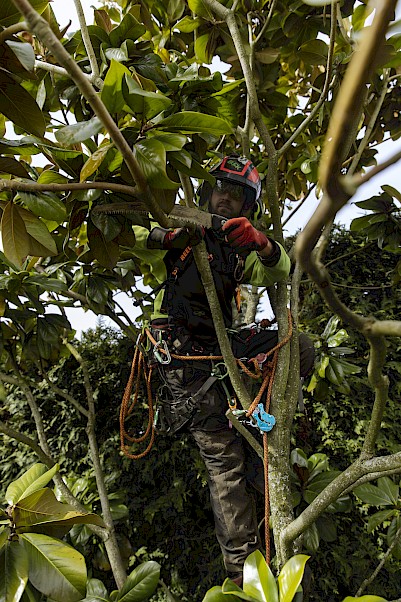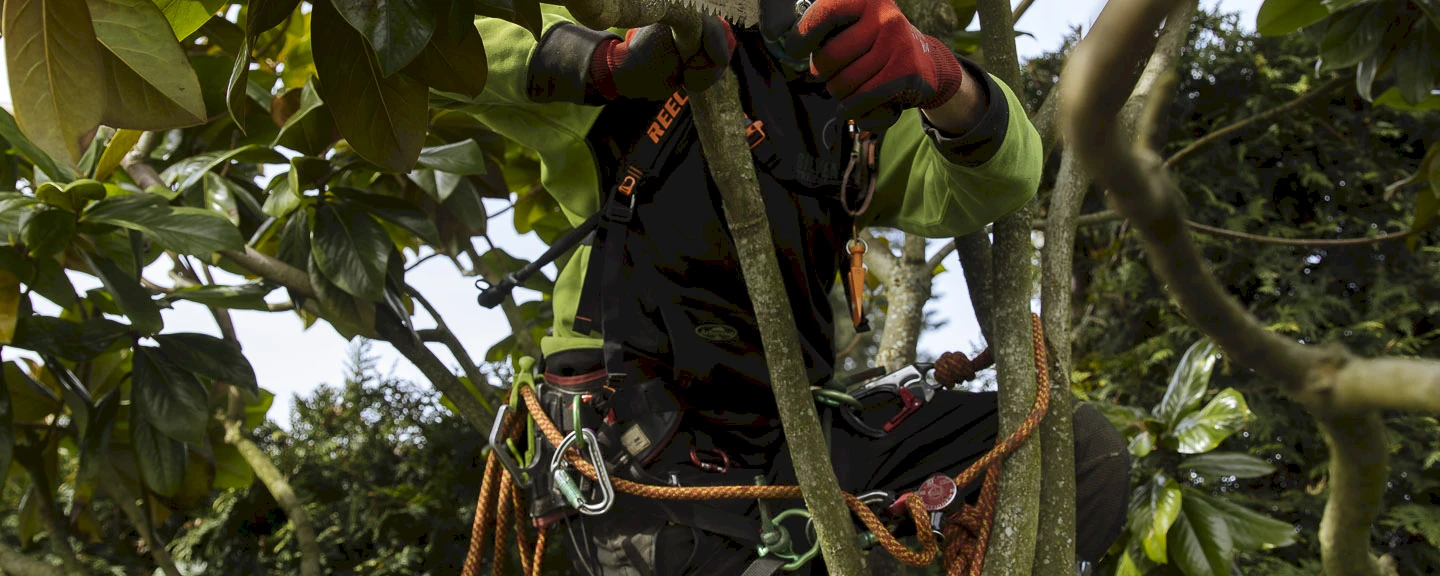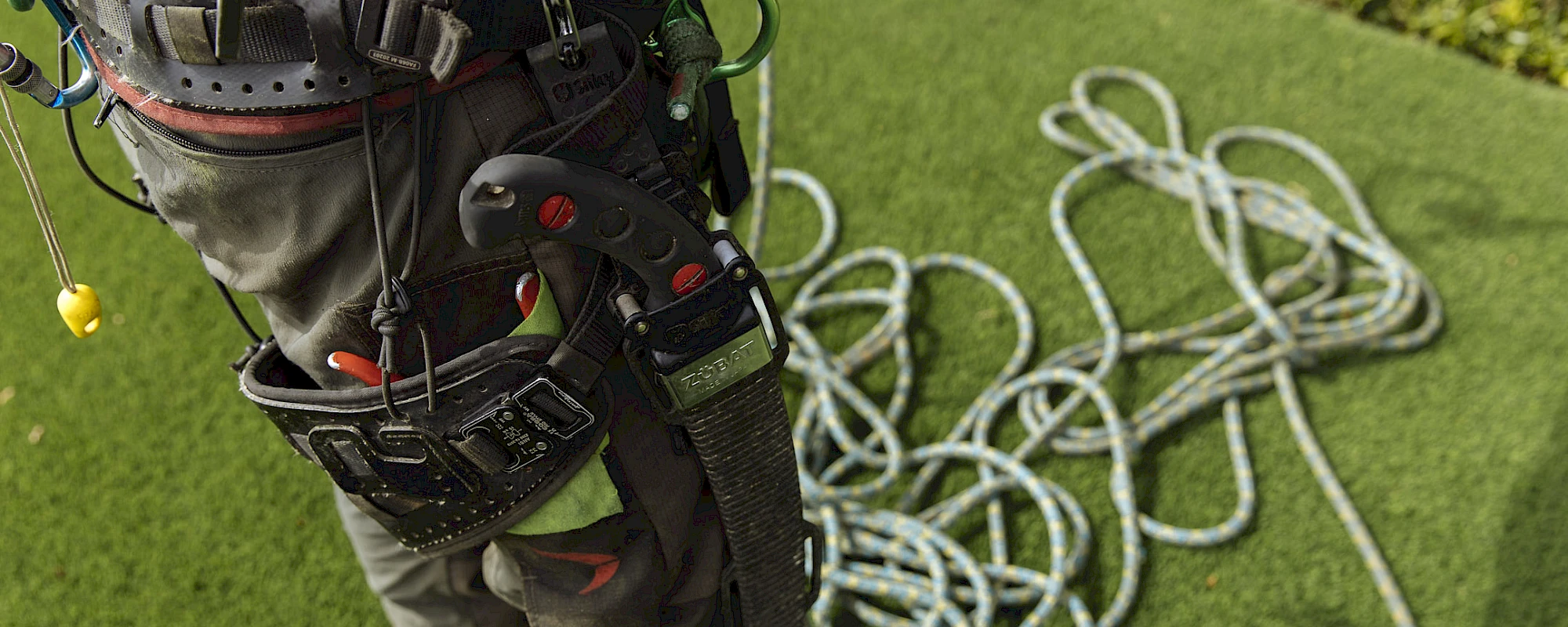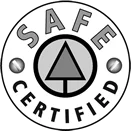Expert Tree Trimming Services in Vancouver: Costs, Techniques, and Certified Arborist Guidance
Tree trimming in Vancouver refers to the professional pruning and maintenance of trees and hedges to improve safety, structure, and long-term health. This article explains what responsible tree trimming entails, how certified arboricultural techniques deliver measurable benefits, and why seasonality, species, and local bylaws shape every decision for residential and commercial properties. Many Vancouver property owners face hazards from overgrown limbs, diminished light, and invasive pests; targeted pruning reduces those risks while preserving urban canopy value. You will learn the benefits of professional tree trimming, transparent cost expectations, seasonal timing specific to Vancouver’s maritime climate, core ISA-aligned techniques, permit triggers under local bylaws, and how to choose a qualified service. Throughout the guide we use local examples (cedar hedges, maples, fruit trees) and practical checklists to help you plan work safely and cost-effectively.
What Are the Benefits of Professional Tree Trimming in Vancouver?

Professional tree trimming in Vancouver improves tree health, reduces risk, and enhances property aesthetics by applying species-specific pruning that follows arboricultural science. By removing deadwood, thinning congested canopies, and correcting structural defects, arborists reduce disease spread and redirect growth in ways that promote long-term vigor. Proper trimming increases light penetration and airflow, which lowers fungal risk in Vancouver’s damp climate and improves understorey plant health. Professionally executed work also mitigates hazards to people and property by reducing the likelihood of falling branches and by maintaining clearance over structures and powerlines.
Professional trimming delivers visible curb appeal benefits that can raise perceived property value and neighborhood safety. Trimming that respects natural form preserves a tree’s aesthetics while addressing functional concerns like sightlines and sidewalk clearance. Homeowners often see improved seasonal light and lower maintenance costs after a targeted pruning plan is implemented. For property managers and commercial sites, regular trimming supports continuity of operations by reducing storm-related disruptions and emergency removals.
The primary biological benefits of pruning translate directly to safety and resilience in urban forestry, which matters in Vancouver’s mixed-species streetscapes. Removing infected or dead branches prevents pathogens from spreading into a tree’s core, and corrective pruning helps young trees develop strong branch architecture. This integrated approach supports urban canopy retention and reduces long-term liability.
For residents seeking professional help, consider requesting an assessment from a local ISA certified arborist who can provide a site-specific pruning plan and estimate. A certified assessment clarifies objectives—safety, clearance, aesthetic—and usually includes recommended timing and follow-up maintenance without obligating you to a specific contractor.
How Does Tree Trimming Improve Tree Health and Longevity?
Tree trimming improves health by removing dead or diseased limbs and by opening the canopy to light and air, which reduces fungal and pest pressure in Vancouver’s moist climate. Proper cuts follow pruning targets that preserve branch collars and minimize wound size so trees can compartmentalize damage and heal effectively. Thinning out crowded branches redirects growth to stronger scaffold limbs and balances weight distribution, lowering the risk of structural failure in storms. When applied early in a tree’s life, formative pruning establishes a durable framework that extends longevity and reduces the need for corrective surgery later.
Certified arborists evaluate species-specific responses—maples, cedars, and fruit trees each have different healing and sap-flow behaviors—and adjust pruning timing and technique accordingly. This species-aware approach prevents common mistakes such as excessive crown reduction or improper topping, both of which shorten a tree’s life. Regular maintenance pruning also allows early detection of decay or pests, enabling interventions that are less invasive and more cost-effective than emergency removal.
How Does Tree Trimming Enhance Property Safety and Curb Appeal?
Tree trimming enhances safety by removing hazards and by shaping branches to avoid structures, walkways, and utility lines, addressing common risk points on Vancouver properties. Strategic pruning reduces the mass of wind-exposed limbs and eliminates deadwood that could fall during storms, lowering the chance of injury or damage. A visually maintained tree contributes directly to curb appeal: clean lines, balanced canopies, and clear sightlines make properties look cared-for and can improve neighborhood streetscapes. These aesthetic improvements also support easier access for maintenance and inspections, which in turn sustains long-term safety.
Well-executed trimming uses a minimal-wound strategy that preserves natural form while solving functional problems, avoiding unsightly cuts that can invite decay. For homeowners considering renovations or landscaping upgrades, proactive pruning is often part of pre-sale staging and can reduce potential red flags during inspections. Choosing an arborist who documents before-and-after conditions and explains the rationale for each cut helps owners understand the balance between appearance and structural integrity.
How Much Does Tree Trimming Cost in Vancouver?

Transparent cost guidance helps property owners plan for tree care without surprises. Typical per-tree price ranges in the Vancouver area vary widely depending on size, species, access, and complexity; small ornamental trees often start at a few hundred dollars while large mature trees can reach into the mid-thousands when rigging or heavy equipment is required. Hedge work is commonly charged by linear metre or per-session, with formal shaping and tall privacy hedges demanding higher rates. Factors such as proximity to structures, requirement for a crane or bucket truck, hazardous removals, and debris disposal all increase cost.
Below is a concise cost breakdown showing how size and complexity influence typical local ranges and considerations.
Tree size or work type | Typical cost range (CAD) | Notes on access / complexity |
|---|---|---|
Small ornamental tree (up to ~4 m) | $300–$700 | Standard pruning, minimal equipment |
Medium mature tree (4–12 m) | $700–$1,500 | May require rope access or lift; species matters |
Large mature tree (12 m+) | $1,500–$4,000+ | Rigging, crane, traffic control can add cost |
Hedges (per session / linear metre) | $200–$1,500 | Depends on length, height, formal shaping needs |
This cost table clarifies typical ranges and emphasizes that precise quotes depend on site conditions and objectives. Always request itemized estimates when applicable. Our day rate is around $3000 and utltimatly the time taken is what will determine the price.
Common factors that influence price include tree size, species (hardwood vs softwood), access constraints, required equipment, health of the tree, and disposal logistics. Here is a practical list to help evaluate estimates.
- Tree Size and Canopy Complexity: Larger diameter and heavy crowns need more time and rigging.
- Access and Site Constraints: Narrow access, proximity to buildings, and suburban lanes increase labour.
- Species and Health: Decayed or pest-infested trees need careful, slower work and sometimes specialist treatment.
- Equipment and Safety Needs: Cranes, bucket trucks, and additional rigging increase hourly costs.
- Debris Removal and Disposal: Chipping, hauling, and stump work can be line items on a quote.
If you want an accurate local price, request a free estimate or an assessment from a local ISA certified arborist who can evaluate species, access, and risk on-site and provide a tailored quote.
What Factors Influence Tree Trimming Prices in Vancouver?
Prices reflect the combination of biological risk, logistics, and regulatory requirements; larger diameters, structural decay, and tight access multiply labour and safety needs. Species matters because dense-wooded trees take longer to cut and can demand different rigging techniques; for example, large conifers or mature maples require experienced rigging crews. Work performed near powerlines or above driveways typically triggers additional planning and safety protocols that increase cost. Seasonal factors—wet ground in fall or winter—can affect accessibility and crew safety, sometimes prompting higher rates for specialized ground protection.
Arborists price work based on time, crew size, equipment, and liability exposure; an itemized estimate should show these elements clearly. Obtaining multiple quotes and asking for a scope of work, removal plan, and contingency for unforeseen conditions helps compare bids fairly. Always confirm that estimates include cleanup and disposal so there are no hidden fees after work is completed.
How Do Hedge Trimming Costs Compare to Tree Trimming Services?
Hedge trimming is usually billed per linear metre or per-session rather than per-plant, and costs depend on hedge height, length, species, and desired finish. Formal, shaped hedges require more frequent attention and skilled shaping, which raises hourly labour and sometimes requires additional equipment such as scaffolding for tall hedges. Fast-growing privacy hedges (e.g., cedars) need heavier pruning more often, whereas established formal hedges may need lighter, frequent trims to maintain a crisp profile.
Maintenance plans that schedule 2–3 trims per year can reduce long-term costs by preventing large corrective cuts. For long hedges, insist on a clear scope that includes trimmings, debris removal, and disposal, and consider arranging recurring service to spread cost and preserve visual continuity.
When Is the Best Time to Trim Trees and Hedges in Vancouver?
Timing pruning to species and seasonal cycles is critical in Vancouver’s maritime climate; late winter to early spring is generally best for many deciduous trees because trees are dormant and wounds can close as the growing season begins. Dormant-season pruning reduces sap flow and pest attraction while allowing arborists to inspect branch architecture without foliage obscuring defects. Conifers and evergreens have different considerations—light thinning can occur outside dormancy, but heavy reductions are better performed with species-specific timing and method.
Flowering shrubs and hedges must be pruned according to bloom timing: spring-flowering species should be trimmed after bloom to protect the next season’s flowers, while summer-flowering plants can be pruned in winter or early spring. Hedging schedules vary by species and desired form; frequent light trims during active growth produce dense, tidy surfaces without large wounds.
Climate considerations matter in Vancouver because prolonged wet periods can increase disease transmission; avoid heavy pruning immediately before extended rainy spells unless removing hazardous material. Planning work during drier windows mitigates wound infection risk and improves crew safety on wet slopes and lawns.
Below is a simple seasonal guideline tailored to common Vancouver scenarios.
- Late winter / early spring: Dormant pruning for most deciduous trees.
- After bloom: Prune spring-flowering hedges and shrubs.
- Late spring / summer: Light maintenance trims and corrective work for non-flowering hedges.
- Avoid heavy pruning in prolonged wet periods unless necessary for safety.
What Are the Seasonal Guidelines for Tree Trimming in Vancouver’s Climate?
Dormant-season pruning in late winter provides a good window to perform most corrective and structural cuts because tree energy reserves are low and nested insects are less active. This timing also lets arborists evaluate form without leaves blocking defects, making structural pruning more precise. However, species-specific caveats apply: maples and some sap-heavy species are often pruned when risk of bleeding is acceptable, while conifers are pruned conservatively to avoid open wounds that may not compartmentalize well. Fruit trees sometimes benefit from late-winter pruning to encourage fruiting structure, while spring-flowering shrubs should be pruned after flowering to protect this season’s buds.
Weather patterns in Vancouver—wet winters and temperate springs—mean that planning work during drier spells reduces infection risk and keeps ground conditions safe for crews. When in doubt, consult an ISA certified arborist for species-specific timing that balances health, bloom, and structural objectives.
How Often Should Hedges Be Trimmed for Best Results in Vancouver?
Most hedges benefit from two to three maintenance trims per year to retain shape and density without resorting to heavy corrective cuts. Fast-growing species may need three or more light trims during the growing season to control size, while slower growers can be managed with fewer sessions. Formal hedges that require crisp edges typically follow a scheduled program to prevent large cuts that open up and invite disease; informal or wildlife-friendly hedges can be trimmed less frequently to balance habitat value and neatness.
Maintenance trimming focuses on light cuts that preserve the plant’s photosynthetic surface and avoid exposing large internal stems. Proper scheduling reduces waste and long-term labour by preventing major corrective work. For precise cadence, an assessment by a local arborist or horticulturist can recommend a plan tailored to species, microclimate, and aesthetic goals.
What Are the Key Tree Trimming Techniques Used by ISA Certified Arborists?
ISA-aligned arboricultural techniques focus on minimal-wound cuts, structural pruning, and species-appropriate thinning to achieve safety and health objectives. Core methods include crown cleaning (removal of deadwood), crown raising (increasing clearance), crown reduction (reducing height and spread), and crown thinning (selective removal to improve airflow). Each technique serves a distinct purpose: crown cleaning removes hazards, crown raising provides clearance, crown reduction controls size while preserving form, and thinning reduces wind sail and light competition. These techniques combine to manage risk, improve light, and maintain structure.
Arborists choose methods based on the tree’s species, age, and condition, aiming to preserve the tree’s natural architecture and wound-closure capacity. Safety protocols—roped access, rigging, ground exclusion zones—are integral, and proper pruning cuts prioritize the branch collar to support compartmentalization. Post-pruning care, including monitoring and targeted follow-up, completes the lifecycle of professional trimming and ensures long-term outcomes.
The table below compares common techniques with their practical attributes and typical benefits for Vancouver trees.
Technique | Purpose / Attribute | Benefit / Expected Outcome |
|---|---|---|
Crown cleaning | Remove dead/diseased branches | Reduces failure risk and disease spread |
Crown raising | Increase clearance above ground structures | Improves access and sightlines; reduces damage risk |
Crown reduction | Reduce height/spread while maintaining form | Controls size near structures without topping |
Crown thinning | Selective branch removal within canopy | Improves light penetration and wind resistance |
How Do Certified Arborists Perform Precision Trimming and Pruning?
Certified arborists begin with an assessment that identifies species, structural defects, target objectives, and risk elements; this diagnostic step shapes a pruning plan that minimizes injury and maximizes benefit. Precision trimming uses proper pruning cuts—cutting back to the branch collar, avoiding flush cuts, and removing codominant stems selectively—to preserve natural healing. Arborists employ appropriate tools and protective equipment, from hand pruners for small work to rope access and mechanical lifts for larger tasks, and they document work for client records and follow-up care.
The process often involves staged work: initial corrective cuts, removal of hazardous limbs, and lighter finishing cuts to shape the canopy, followed by cleanup and monitoring recommendations. This methodical approach reduces the need for repeat heavy pruning and helps trees develop resilient structure over time.
Why Is ISA Certification Important for Tree Trimming in Vancouver?
ISA certification signals formal training in arboriculture, a commitment to industry best practices, and knowledge of species-specific biology and pruning standards. Hiring a certified arborist increases the likelihood that pruning will use minimal-wound techniques, correct structural problems, and observe safety standards required for complex or risky jobs. Certification also aligns with professional accountability and can support insurance and permit processes that sometimes require documented expertise or arborist reports.
In Vancouver’s regulatory and climatic context, an ISA certified arborist understands local species responses and municipal expectations for tree work. When permit applications or arborist reports are needed, a certified professional provides credible assessments that facilitate compliant outcomes and safer work.
After reviewing these techniques, many property owners choose to engage a certified arborist for assessments or formal arborist reports to guide sensitive or permit-triggering work. Local service pages and provider hubs often explain specific offerings and scheduling options for assessments and pruning plans.
Do You Need Permits for Tree Trimming or Removal in Vancouver?
Trimming alone typically does not require a permit, but removal of trees above specific diameter thresholds or work on protected species often does under City of Vancouver bylaws. Permit rules hinge on tree size (diameter at breast height), species protection status, and location (e.g., certain developments or strata sites). When removal is proposed for regulated trees, the City may require an application, a tree assessment or arborist report, and mitigation measures such as replacement planting.
Understanding the distinction between maintenance pruning (generally permitted) and removal or injurious work (may require permit) helps owners avoid fines or replanting orders. When in doubt, obtain an arborist assessment documenting condition and recommended work; this report can clarify whether a permit is necessary and streamline any application process.
The table below summarizes common actions and permit expectations as a reference for Vancouver property owners.
Action | Permit Required? | Thresholds / Notes |
|---|---|---|
Routine trimming (maintenance) | Usually no | No permit for standard pruning not affecting tree health or DBH |
Tree removal | Often yes | Removal of trees above set DBH thresholds or protected species needs permit |
Stump removal/grinding | Varies | Some properties require notification; check municipal rules |
Work on protected trees | Yes | Protected species and trees in certain zones need approval |
When Is a Tree Removal Permit Required in Vancouver?
A removal permit is typically required when a tree exceeds the municipality’s diameter threshold, when it is a protected species, or when its location falls within regulated zones such as development sites. While trimming for maintenance is a separate activity, any proposed removal for health, hazard, or development reasons usually requires documentation demonstrating need and proposed mitigation. An arborist report that assesses structure, pests, and decay can substantiate a removal application and recommend replacement planting where appropriate.
Because thresholds and protections change over time, property owners should confirm current local requirements before scheduling removals. Engaging a qualified arborist early in the process helps determine whether removal is justified or whether targeted pruning and monitoring will suffice.
How Do Vancouver Bylaws Affect Tree Trimming and Removal Services?
Vancouver bylaws set the legal framework that governs who can remove or significantly alter trees, what penalties exist for non-compliance, and what mitigation is required after removal. Service providers must operate within these rules by obtaining permits when needed, submitting arborist reports, and following replacement or restoration requirements. Non-compliance can result in fines, work stoppage orders, or mandatory replanting, which increases the overall cost of unpermitted work.
Professional arborists and landscape contractors typically incorporate bylaw considerations into their quotes and can advise on the approval process. Hiring a provider familiar with local rules reduces the risk of inadvertently breaching regulations and helps ensure that any required documentation is prepared correctly.
British Columbia Municipal Tree By-laws for Protection and Removal
In 1992 the Municipal Act of British Columbia was amended, allowing municipalities to enact by-laws governing the protection, removal, and replacement of trees on public and private property. The new legislation has the potential to introduce major changes into the way new urban settlements are designed and created. So far, only a few municipalities have passed by-laws under the amended legislation, although many are actively investigating the ramifications.
How Can You Choose the Right Tree Trimming Service in Vancouver?
Choosing the right service requires vetting credentials, insurance, methods, and local experience. Start by confirming that the provider uses ISA-certified arborists for assessments and that crews carry liability and workers’ compensation coverage. Compare written estimates that include scope, equipment, disposal, and permit handling; avoid low bids that omit essential safety measures. Review documented case photos and request references for similar Vancouver projects to see evidence of species-specific competence and tidy cleanup standards.
Below is a concise checklist of questions to ask when vetting an arborist or trimming service.
- Are you an ISA certified arborist and can you provide proof?
- Do you carry liability insurance and workers’ compensation?
- Will the quote include permits, disposal, and a detailed scope of work?
- Can you provide references or before/after photos for similar projects?
- What post-pruning care or monitoring do you recommend for this species?
Evaluating responses to these questions helps differentiate providers who prioritize safety and tree health from those who offer purely cosmetic or low-cost fixes. Look for clear, itemized proposals and providers willing to explain pruning rationale and follow-up care.
What Questions Should You Ask an Arborist Before Hiring?
Before hiring, ask about certification, insurance, experience with local species (cedars, maples, fruit trees), equipment, and permit handling to ensure the crew can perform the work safely and compliantly. Request a written scope that describes pruning targets, cleanup, and any required follow-up, and ask how the arborist will manage unexpected findings such as decay or root issues. Inquire about crew supervision, traffic or site safety measures, and whether the estimate includes disposal and any stump work. A reputable arborist provides clear answers and documents their recommendations in writing.
ISA Professional Arborist Certification Explained
Professional credentialing refers to the process of obtaining a certification or license that validates an individual’s knowledge, skills, and abilities according to industry-accepted ethics and standards. The International Society of Arboriculture (ISA) confers and manages professional arborist certification as well as other arborist credentials.
How Do Customer Reviews and Certifications Influence Your Choice?
Reviews and certifications together form a reliability signal: verified testimonials with project photos demonstrate real-world performance, while ISA certification indicates formal competence and adherence to best practices. Look for consistent themes in reviews—timeliness, cleanliness, communication—and prioritize providers who transparently document challenging jobs similar to yours. Certification and insurance support professional accountability, while detailed reviews reveal how a company handles on-site complications and customer service.
When comparing providers, weigh certifications alongside practical evidence of successful, local projects; the combination reduces risk and improves the likelihood of durable, safe outcomes.
For homeowners ready to proceed, consider requesting estimates from multiple ISA certified arborists to compare scopes and pricing, and to confirm permit needs before scheduling work.
For property owners who want assistance finding qualified providers or arranging an ISA arborist assessment, request an on-site estimate or consultation from local service hubs and certified professionals; they can provide a written plan, risk assessment, and tailored quote without obligation. This article focused on education and planning; if you need a site assessment or estimate, request an arborist consultation to determine the best course for your trees and hedges.





